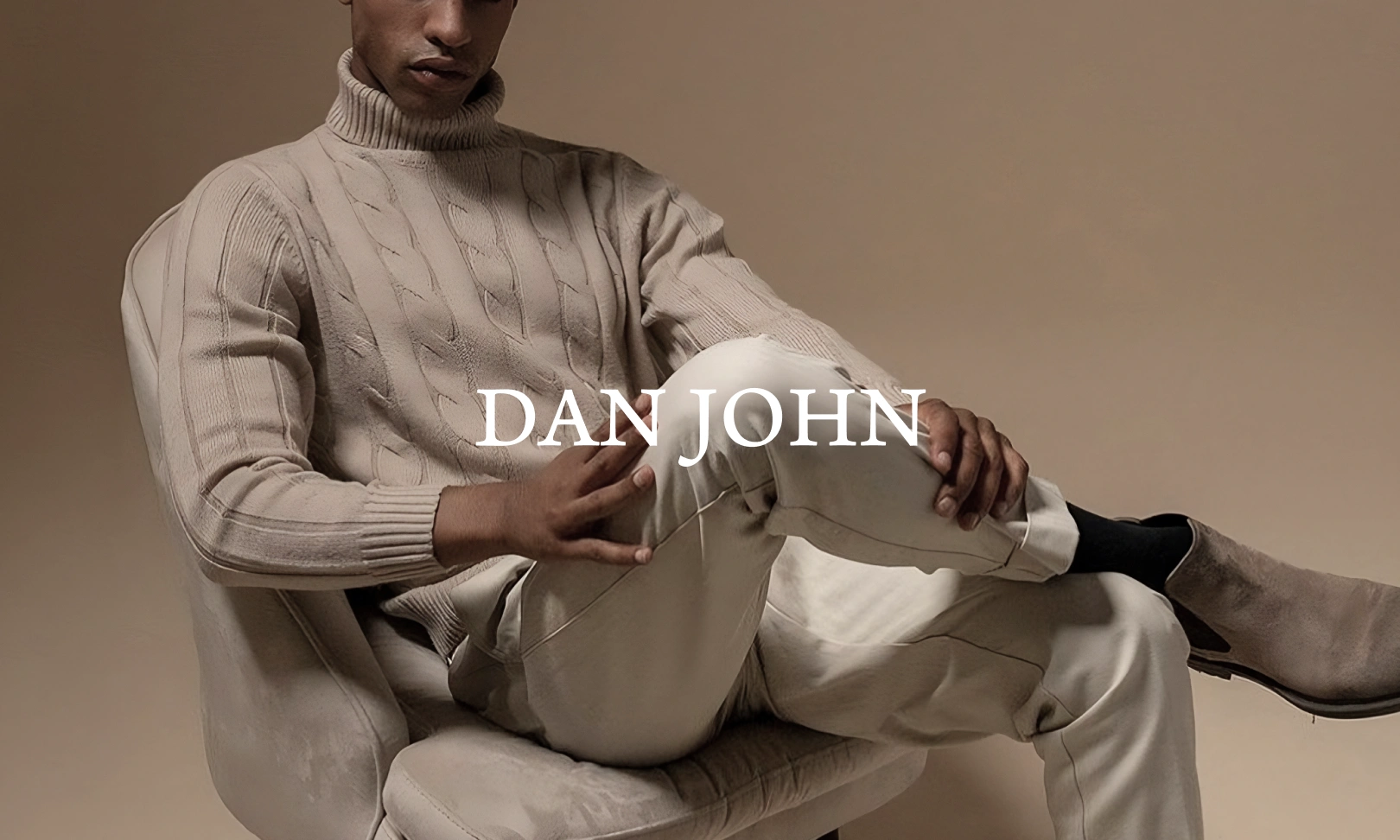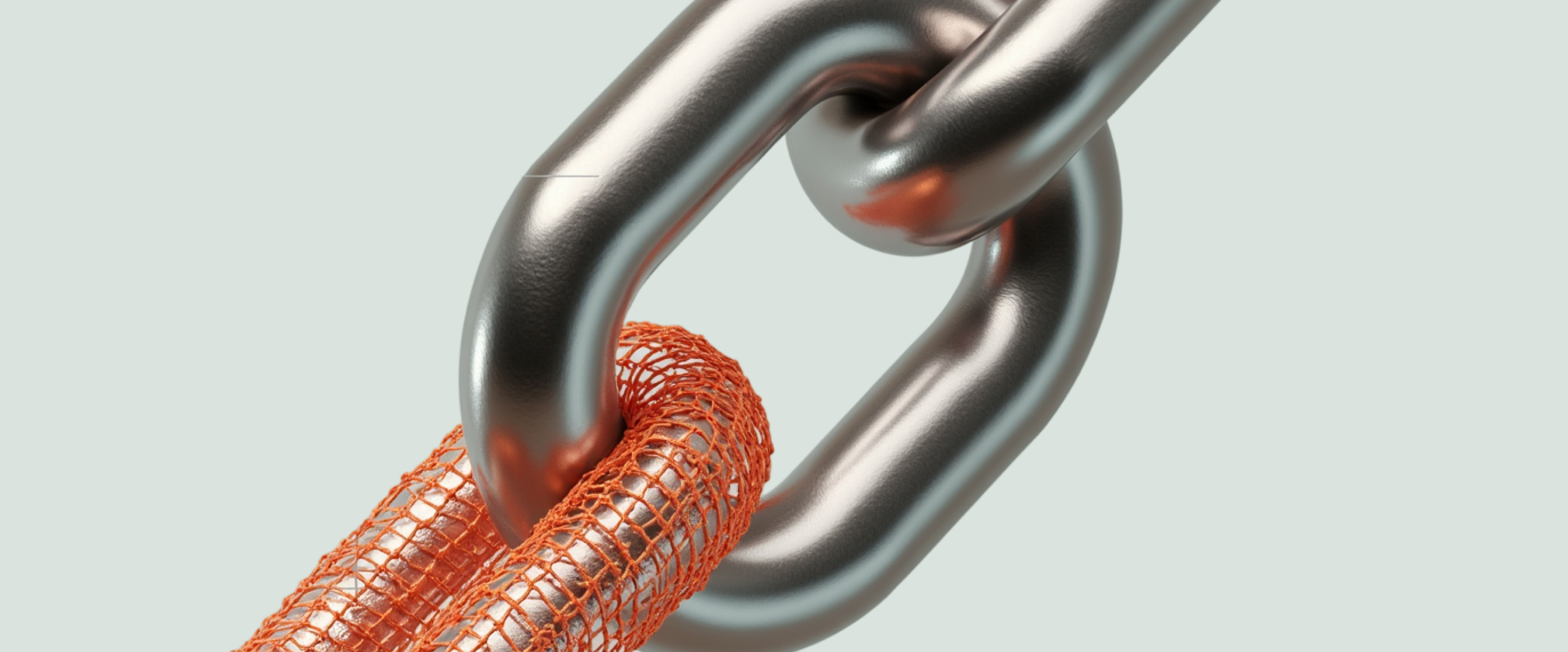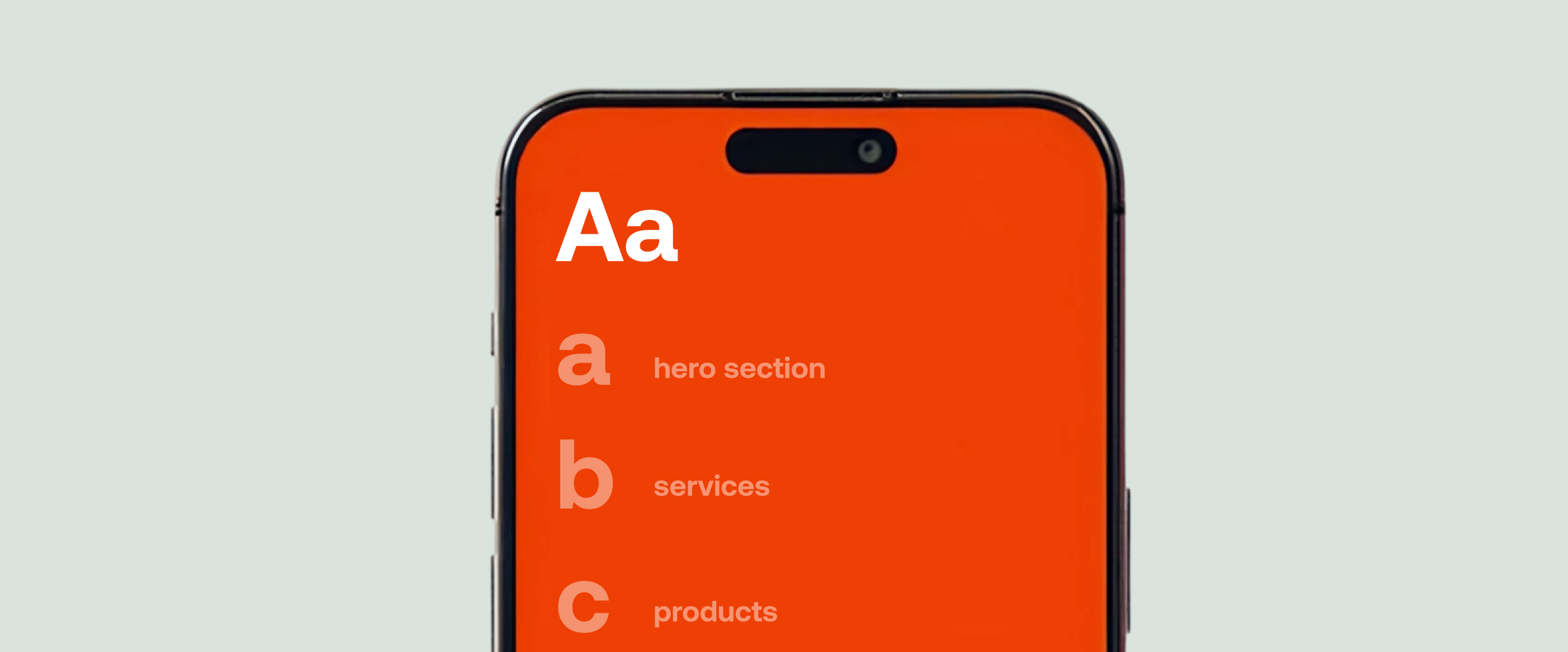











Recognitions
projects
Services

Key Factors to Consider When Choosing a UX Design Agency



Check out our latest article detailing what sets a top-notch UX design agency apart. Uncover the secret recipe of their success, learn what to look for when making your choice, and ensure your business is prepared to shine in the digital landscape.
In the vibrant, constantly evolving digital world, the role of UX design agencies is pivotal. From expertise to adaptability, several traits distinguish a great agency. This comprehensive guide unpacks these crucial characteristics, providing valuable insights to help you make an informed decision when choosing a UX design agency.
What to Look for in a Top-Performing UX Design Agency
In the pulsating, ever-changing digital universe, UX design agencies sit at the helm, guiding our online experiences.
Imagine navigating through your favorite website, downloading a new mobile app, or interacting with an online platform; the invisible strings pulling these experiences together are in the hands of UX professionals. User Experience or UX is the silent yet potent catalyst defining our satisfaction and ease of use. The role of UX design agencies is akin to that of a maestro, harmonising the concert of our digital interactions.
Ever wondered why you're hooked on certain websites, can't resist purchasing a product online, or feel compelled to share an app with friends? The secret lies in the transformative power of effective UX design. It molds our digital interactions, making the discovery of information as natural as breathing. As businesses find themselves caught in the tug-of-war of the digital era, the prowess of UX design becomes their defining strength.
1. Expertise and Experience
What really makes a great UX design agency stand out? Two things: expertise and experience. In our ever-changing digital world, having a solid grip on UX principles, keeping up with the latest trends, and using the best tricks in the book can make all the difference.
Experience isn’t just about the number of years. It’s about the lessons learned from working on different UX challenges. It's about spotting potential issues before they become problems and creating smooth digital experiences that users enjoy and businesses benefit from.
But it goes even deeper than that. The best UX agencies don't just rely on what they've always known. They're always learning, always adapting. Can they keep up with the fast pace of change? Do they know when to stick to the tried-and-true, and when to think outside the box?
When an agency's got that mix of deep knowledge and hands-on experience, combined with the ability to keep up with the times and innovate, you know you've found a winner.
2. User-Centric Approach
Another characteristic that shines brightly in an exceptional UX design agency is its unwavering focus on the user.
A good UX agency always places the user front and center of all its design decisions, from the architecture of a website right down to the color of a clickable button.
The user becomes the north star guiding their design journey. Who are the users? What are their goals? What drives them? What are their pain points?
To truly answer these questions, top-notch agencies delve into the realm of user research. A report by McKinsey&Company has found that only approximately 50% of companies conduct user research before starting their work.
This statistic reveals a startling gap in practice, as user research is fundamental to creating user-centric designs. By contrast, top-notch agencies place a strong emphasis on this critical step, ensuring their solutions are not only aesthetically appealing but also deeply rooted in user needs and preferences, thereby setting themselves apart in the industry.
Think of it as detective work - conducting interviews that dig deep, running surveys, and executing usability tests. They sift through this treasure trove of data, uncovering golden insights into the behaviors and preferences of users. These insights become the foundation upon which they build their design strategies.
One of the tools they might use is 'personas'. Think of personas as characters in a play - fictional yet realistic representations of the key user groups. Creating these personas helps the agency keep a laser-like focus on the user's needs and experiences throughout the design journey.
But here's the thing. A user-centric approach isn't just about decoding what the user wants. It's about feeling what they feel. It's about stepping into their shoes and viewing the digital world from their perspective. Exceptional UX design agencies champion for the user, fighting to make the digital world not only easy to navigate but also enjoyable to explore.
3. Collaboration and Communication
Imagine the UX design process as a harmonious symphony, where each player - the clients, users, developers, and marketers - adds their unique notes to create a beautiful user experience. This is where the concert of collaboration and communication begins to play.
In a remarkable UX design agency, it's less about solo performances and more about an ensemble. Team members weave together their ideas, play off each other's expertise, and orchestrate feedback to create a symphony of solutions.
But that's not all. Clients and other stakeholders aren't just spectators. They're part of the band, bringing their unique insights to the table and making sure the design aligns with their goals and visions.
But what makes this harmonious symphony possible? It's effective communication - the conductor of this orchestra.
Communication in a good UX design agency isn't just about passing notes. It's about making sure everyone is playing the same tune. It's about clarity and proactiveness, preventing off-key misunderstandings, and ensuring everyone is tuned into the same frequency. This helps keep the project marching forward to the rhythm of success.
4. Design Process and Methodology
The design process and methodology are the cornerstones of any UX design agency. It is the engine that drives every project from an initial idea to a fully realised product. A good UX design agency like Fourmeta follows a clear and well-defined design process and methodology that aligns with industry standards.
Let's break it down further:
- Research: This stage forms the bedrock of a project. Here, the agency digs deep into the user's world, uncovering their needs, behaviors, and motivations like an archaeologist discovering hidden treasures. This stage may involve tools like surveys, interviews, and observational studies to gather data. The aim is to fully grasp the user's perspective and define the problems to be solved.
- Ideation: This is the creative powerhouse of the process. The gathered data is processed into insights that fuel brainstorming sessions. During these sessions, the team generates a multitude of potential solutions, sketching rough design ideas. The goal here isn't to come up with the perfect idea but to explore a wide range of possibilities.
- Design: At this stage, those rough ideas start taking shape. The team develops concrete design concepts based on the most promising ideas from the ideation phase. They create wireframes and mockups that outline the structure and visual layout of the product. It's like an architect drafting the blueprint of a building.
- Prototyping: Now it's time to create a working model of the product, something users can interact with. This preliminary version, or prototype, may not have all the bells and whistles of the final product, but it's enough to test the core functionality. Think of it as the rehearsal before the main performance.
- Testing: This stage is all about getting the prototype into the hands of users and observing their interaction with it. User feedback gathered during this stage is like gold dust – it gives the team invaluable insights into what's working well and what needs tweaking.
- Implementation: This is the home stretch. Armed with user feedback, the team polishes the design and makes the necessary adjustments. They ensure the design is optimised for usability, accessibility, and overall user experience before it's ready to go live. Remember, this isn't a one-way road. A proficient UX design agency knows that the design process is iterative – it often involves looping back, revising, and refining based on continuous feedback and testing.
Moreover, a good agency is like a jazz band — they understand the basic structure but are flexible enough to improvise when needed. They may fast-track the process for a project with a pressing deadline or spend more time exploring and refining each stage for a more intricate design.
Thus, a good UX agency not only follows a strong design process but also demonstrates the agility to adapt that process to the unique needs and constraints of each project. It's this fusion of methodical planning and adaptive flexibility that leads to truly successful, user-centric designs.
According to a survey conducted by the Design Management Institute, the incorporation of design principles in business strategy and innovation significantly enhances the success rate of innovation.
Notably, design-led companies such as Apple, Coca-Cola, IBM, Nike, and Target have surpassed the performance of the S&P 500 by an astounding 228% over a ten-year period.
5. Strong Portfolio and Case Studies
The portfolio and case studies of a UX design agency are like its museum exhibit - they don't just show off the agency's most beautiful works, they tell stories. Each project is a journey, from identifying a problem to developing a solution, and these stories can tell you a lot about the agency's skills, creativity, problem-solving abilities, and the real-world impact of their work. Here's what to look for:
- Portfolio: The portfolio is like a curated gallery, displaying a range of the agency's past work. Each project in the portfolio offers a glimpse into the agency's style, expertise, and the variety of problems it can tackle.
When looking at the portfolio, don't just admire the pretty pictures. Dig deeper.
What problems were they solving?
How does the design meet the user's needs and the business goals?
How have they incorporated user feedback into the design?
The portfolio can provide a comprehensive picture of the agency's capabilities and how they approach design.
- Case Studies: If the portfolio is like a gallery, the case studies are like behind-the-scenes tours. They provide a detailed walkthrough of specific projects, from the initial problem to the final solution, showcasing the agency's design process in action. Each case study is a story of how the agency tackled a particular challenge and the results it achieved.
When reading case studies, look at how they frame the problem, the process they used to solve it, and the impact of their solution.
Did they conduct user research?
How did they iterate based on user feedback?
How did the final design improve the user experience or meet the business objectives?
Both the portfolio and the case studies offer a chance to see the agency's work in action. The portfolio provides a broad overview of their capabilities, while the case studies dive into the details of their process and the results they can deliver. Together, they form a comprehensive picture of what the agency can do.
So, when you're examining an agency's showcase, don't just look at the surface. Dive deep, ask questions, and see if their approach aligns with your needs.
6. Adaptability and Flexibility
A top-notch UX design agency is like a chameleon, always ready to adapt and adjust its colors to match the ever-changing landscape of design trends, tech advancements, and evolving user expectations. Their adaptability shines through in several ways:
Design Trends and Technology
The digital world moves fast. New design trends and technologies emerge user behaviors evolve, and the UX design agency needs to keep pace. It's not just about jumping on every trend, but about carefully evaluating which trends can enhance the user experience and fit with the project's goals. Whether it's the latest in AI technology or the newest trends in color and typography, a leading UX design agency knows how to integrate these elements to improve the user experience.
Project Requirements and Audience Needs
Every project is unique, with its own set of requirements, goals, and target audience. A flexible UX design agency knows how to adjust its design strategies to cater to these unique needs. If a project targets millennials, they might prioritise mobile-friendly designs and social media integration. If it's for older adults, they might focus on accessibility and simplicity. Flexibility is about understanding these different needs and adapting the design approach accordingly.
Platform-specific Considerations
The agency should also be adaptable when it comes to different platforms. Designing for a mobile app is different from designing for a desktop website or a smartwatch app. Each platform has its own guidelines and user expectations, and the design needs to reflect that. A good UX design agency knows how to navigate these differences and design optimal experiences for each platform.
Iterative Design Process
Flexibility is also crucial in the design process itself. It's not a straight line from point A to point B. It's more like a winding road, where you might need to turn back, take a detour, or find a new path based on user feedback and testing results. A flexible agency knows how to manage this iterative process, adjusting its designs and strategies based on what they learn along the way.
Conclusion
Choosing the right UX design agency may seem like looking for a needle in a digital haystack, but knowing what separates the great from the good can make the task less intimidating. Whether it's their expertise and experience, user-centric approach, collaboration and communication skills, design process and methodology, creativity and innovation, or portfolio and past work, each of these aspects plays a crucial role.
For businesses, big and small, finding the right UX design agency is no longer a luxury; it's a necessity. It's not just about making a website or app that's easy on the eyes, it's about curating digital experiences that strike a chord with your users, addressing their needs while surpassing their expectations.
In the digital age, the importance of UX design can't be overstated. And with a UX design agency like Fourmeta, you can confidently navigate the digital landscape, knowing that your users are in good hands.
By focusing on the user, leveraging their expertise, fostering collaboration, following a solid process, pushing the boundaries of creativity, and demonstrating their skills through a strong portfolio, Fourmeta sets a high standard in the field of UX design. They offer a comprehensive range of services that can help businesses stand out in the crowded digital space and provide users with exceptional digital experiences.




.avif)






















.avif)



